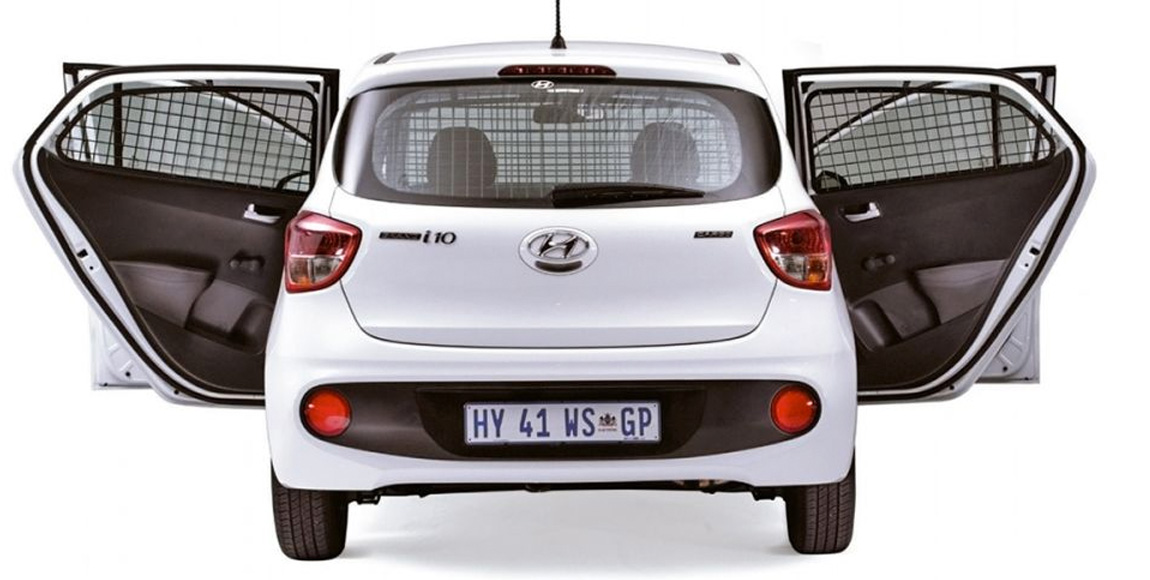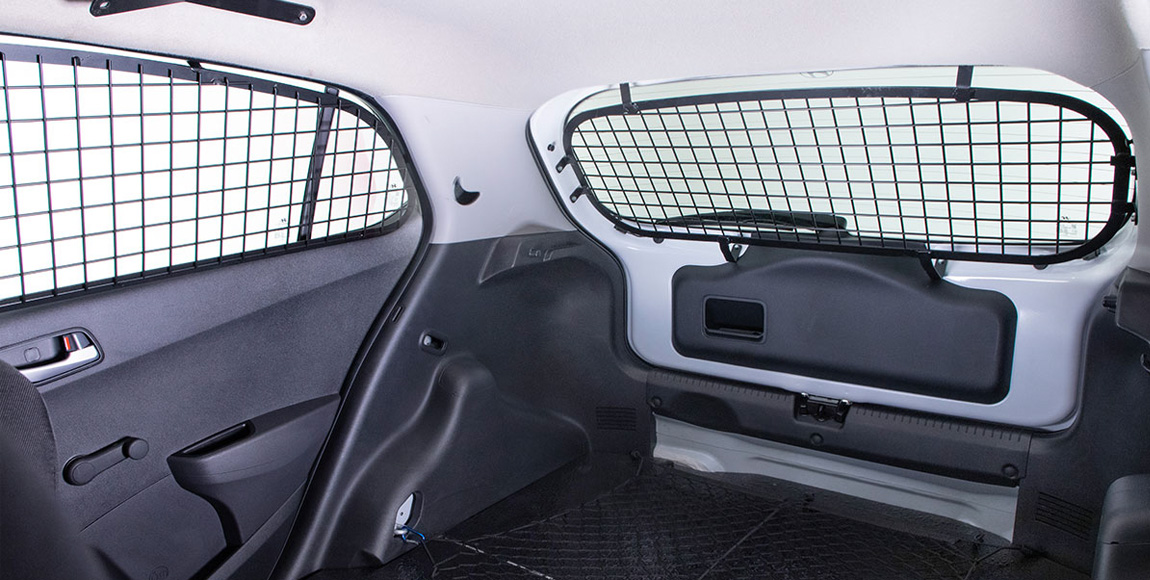Hyundai’s Grand goes commercial

Recently introduced to South Africa, Hyundai’s Grand i10 Cargo fits the bill as a cheap-to-run, light delivery vehicle well-suited to urban conditions
It looks like a compact car, and drives like one, too ̶ but Hyundai’s Grand i10 Cargo is a robust, two-seat delivery vehicle with a load capacity of 1 202 litres – making it practical for city and suburban small-package transport.
In place of a boot and rear bench, the vehicle sports a metal cargo floor that is flat, stretching from the tailgate sill to just behind the front seats, with the area separated from the passenger section by a tough, plastic-coated mesh grille.
Though all rear windows remain in place, they are protected by similar mesh, shielding not only glass from possible breakage from movement of packages inside the cargo area during transportation, but also acting as an anti-theft device.
Incidentally, tie-down points located in the load compartment can be used to secure cargo – they have been positioned for accessibility via the rear doors and hatch – and Hyundai also provides an elasticised cargo net as a standard feature.

Fuel-efficient but zippy, the Grand i10 Cargo appears sensible and comfortable as a cheap-to-run, light load carrier. Hyundai’s spokesmen claim that a redesigned engine-mount system and installation of a quiet-operating fuel pump have helped to keep interior noise levels low, while technology such as intuitive steering-wheel audio and Bluetooth controls, as well as handily placed USB ports, help to reinforce the vehicle’s car-like attributes.
Two derivatives are on sale, each of which is powered by a petrol-fuelled engine. The three-cylinder, normally aspirated unit in the baseline Grand i10 1,0 Motion Cargo produces 48 kW and 94 Nm, while the plusher Grand i10 1,25 Fluid Cargo is equipped with a four-cylinder plant that offers 64 kW and 120 Nm. Both models feature driver and passenger airbags, ABS with EBD, air-conditioning and are sold with Hyundai’s standard five-year/150 000 km warranty.
While the Motion version makes do with a basic audio system, manually adjustable side mirrors, electrically powered windows at the front and steel wheel rims, the Fluid model adds remote central locking, an infotainment system with the option of navigation, electrically powered side mirrors and windows, one-touch indicators and 14-inch alloy wheels.
Hyundai’s spokesmen claim combined cycle fuel consumption figures of 5,4 litres/100 km for the Motion and 5,9 litres/100 km for the Fluid. The vehicles are priced at R184 900 and R221 900 respectively, the latter model incorporating a two-year/30 000 km service plan as part of the deal.
Published by
Focus on Transport
focusmagsa




